The ‘kamikaze’ weapons Israel’s soldiers will fear most in Gaza
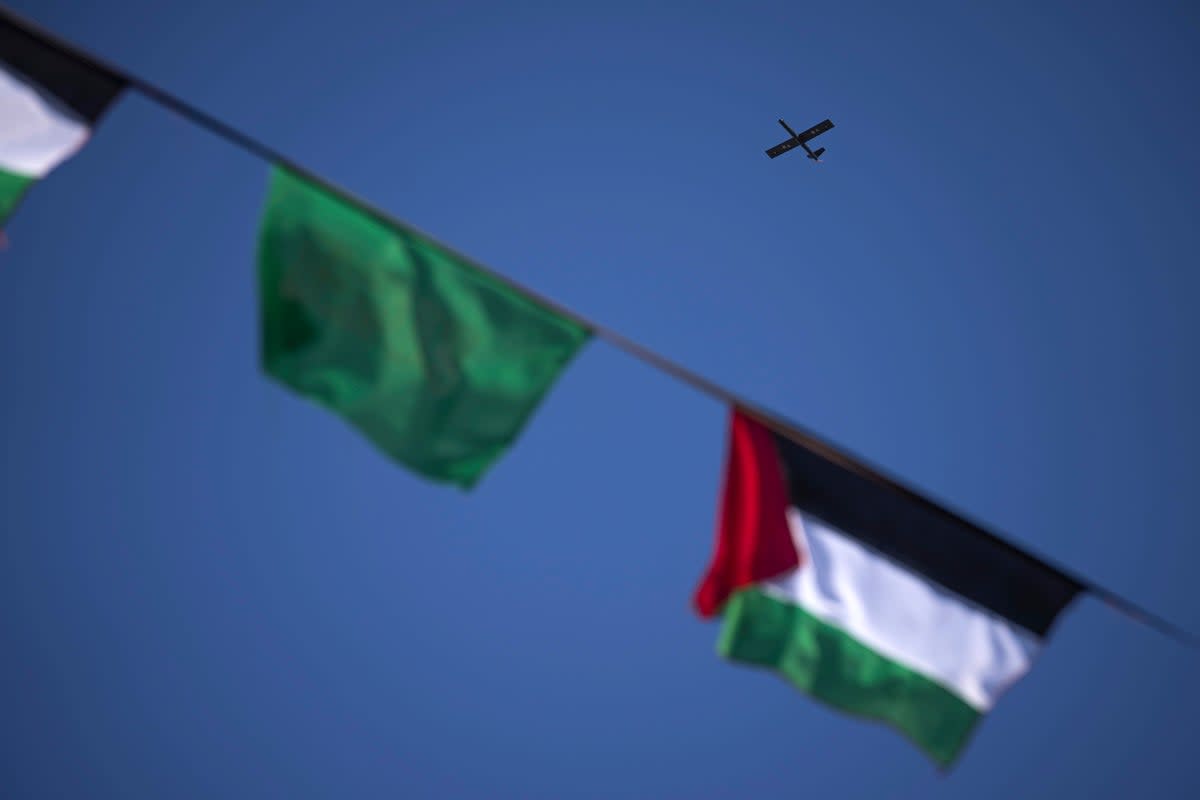
When thousands of Hamas militants crossed into Israeli territory through the most militarised border fence in the world on 7 October, few understood how such a feat was possible.
The multilayered Gaza border fences are roughly seven metres tall and replete with high-tech sensors, remote-controlled machine guns, cellular communication stations and surveillance towers roughly every two kilometres.
How could those within what is considered an “open air prison”, their imports thoroughly vetted, overcome a state-of-the-art fence purpose built to keep them in?
The short answer: drones.
Hamas initiated their 7 October attack by firing 35 single-use attack unmanned aerial vehicles (UAVs) at the border fence, according to a statement by the group’s military wing.
In so doing, they disabled parts of the Israeli communications equipment, preventing the duty officers from monitoring the area remotely with video cameras, and destroyed many of the remotely-controlled machine guns designed to empower soldiers to prevent incursions from afar.
That bought Hamas a brief window to move into Israel, but that was all they needed. The world knows well what happened afterwards.
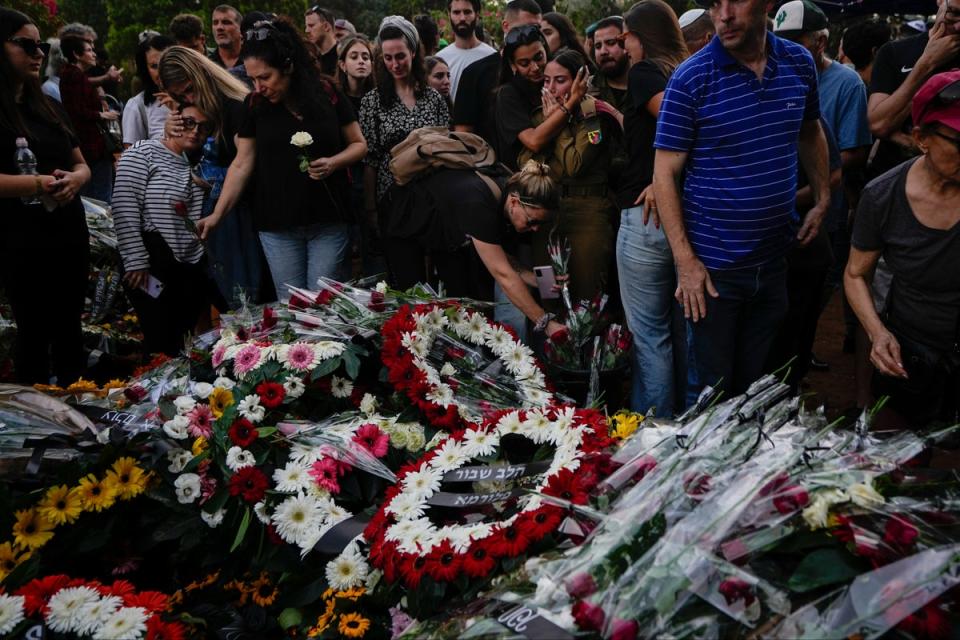
The rise of Hamas from an offshoot group in Egypt to the governors of Gaza has closely coincided with the proliferation of drones, both commercial and within militaries.
Ukraine provided the first real-world example at scale of the effectiveness of modified commercial drones on a battlefield. Hamas has just provided the second example.
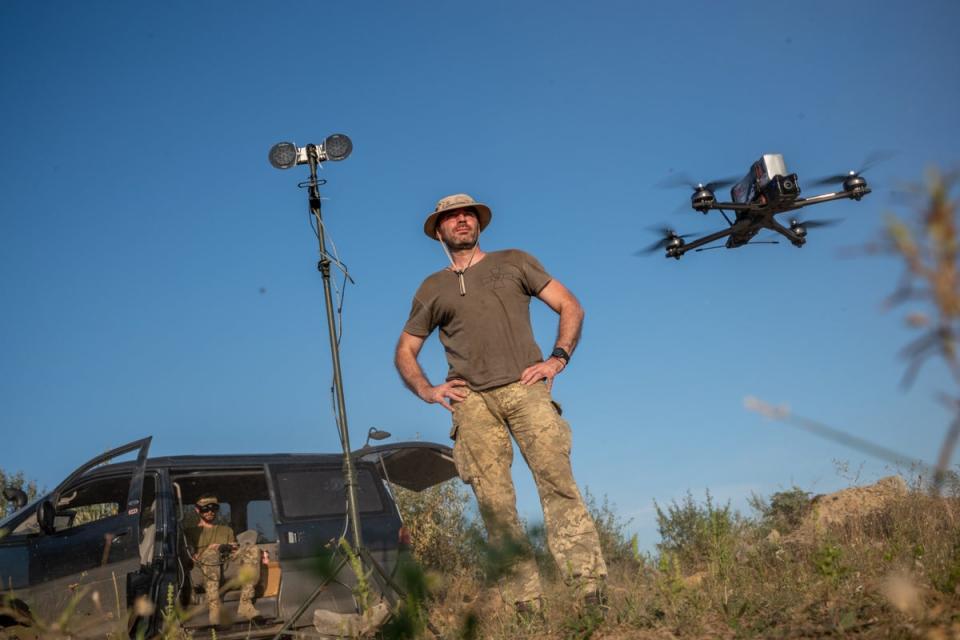
In the past few years, the militant organisation turned de facto leader of Gaza has been building a significant arsenal of commercial drones while working closely with its Iranian backers to acquire military-grade systems.
Israel is considering this aerial risk carefully in preparation for their anticipated ground offensive into Gaza. The threat to life these systems pose make this possible incursion one of the most dangerous in decades, according to experts, as well as one of the most difficult.
Drones proved integral to the beginning of this conflict; they may just define its conclusion.
What drones does Hamas have?
There are three overall types of aerial drones Hamas can use against Israel during a possible incursion, according to Federico Borsari, an expert in unmanned technologies.
These include single-use, fixed-wing kamikaze UAVs, loitering munitions, equipped with video cameras and radio links, known as “suicide drones” by Hamas, and commercially-available quadcopters used for surveillance and reconnaissance, supply runs and dropping munitions.
1. Single-use drones
These are fixed-wing drones guided by GPS-based navigation systems, or inertial systems, that “become one-way attack UAVs that can be directed towards stationary targets, such as infrastructure and military bases”, Mr Borsari said.
They are not equipped to provide live feeds, like other drones, which means they cannot hit moving targets.
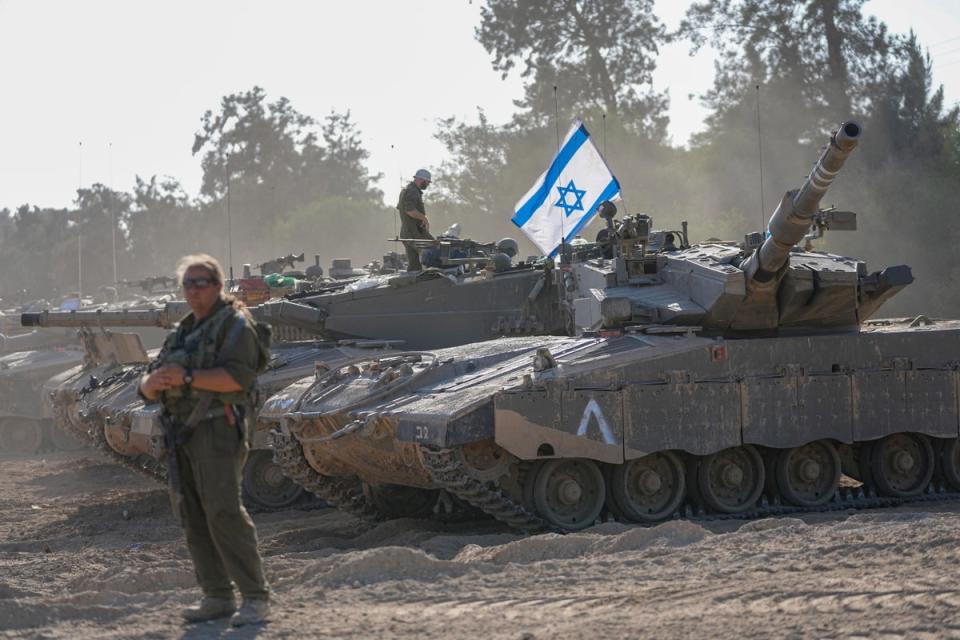
“They have been produced much more in the last few years and they are very effective when used in large numbers,” Mr Borsari said. “If they reach their target, they can have a substantial effect. We are talking about hundreds of drones probably that Hamas have already prepared and stocked.”
But, he added: “If used in small numbers, they are easy prey for Iron Dome defences and other independent anti-unmanned aerial systems (UASs).
2. Loitering munitions
These are similar to attack drones in that they are single-use and operated as kamikazes. As the name suggests, however, they loiter above targets, while a manual operator uses live feeds to redirect the system towards a target.
Mr Borsari said their main function will be “to create chaos within the enemy ranks and to attack enemy patrols/platoons”.
3. Quadcopters
One video from 7 October has already shown the successful use of quadcopters.
The footage showed a modified quadcopter, so-called due to its four rotors, dropping a munition manually fixed to its bottom onto an Israeli Merkava main battle tank, as well as successfully turning off remotely controlled weapons stations installed on top of sentry towers along the border fence.
Noting that these remote Israeli systems were “not designed to counter drones but simply to target potential intruders”, Mr Borsari said it was nonetheless “remarkable” that Hamas had carried out this attack.
“[Israeli] technology was clearly not sufficient to prevent a surprise attack by Hamas,” he said. “This will likely create further problems for Israel’s mechanised units [during its ground incursion into Gaza].”
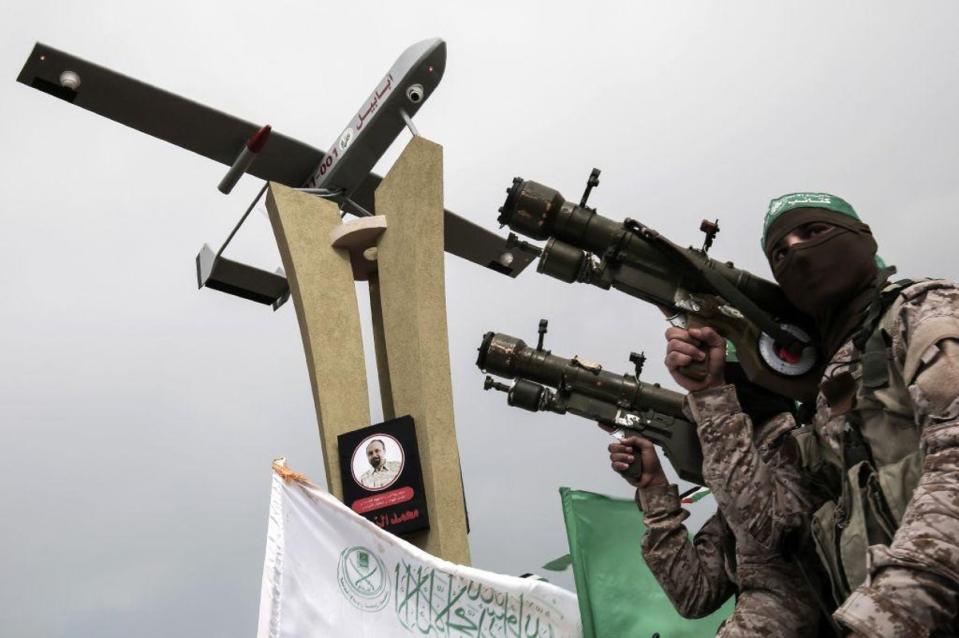
Beyond their ability to carry and drop munitions, quadcopters with surveillance capabilities “will be very important to scout and find enemy hideouts within buildings, and to monitor crossroads.”
“Probably Hamas would resort to more traditional quadcopters to anticipate what kind of direction the Israelis will take and lay down improvised explosive devices (IEDs) and traps for the advancing soldiers,” Mr Borsari said.
They can also be “used to deliver small amounts of supplies, whether that be weapons or munitions, or packages for sniper teams in high buildings”, as well as reaching groups of fighters cut off from their comrades.
4. The unknowns
For all that is known about what Hamas has in its arsenal, “it is quite likely that Hamas has capabilities that we haven’t seen yet, but might see later,” Fabian Hinz, an expert in Middle East weapons proliferation, told the Washington Post.
“The idea is to get to a higher level of escalation and then pull the rabbit out of the hat.”
Israeli forces will have to be wary of unknowns when proceeding.
How will this affect the Israeli soldiers?
The Israeli forces going into Gaza face a multifaceted threat from aerial drones.
Hamas’ surveillance UAVs will increase the likelihood of Israelis having their position compromised.
They could walk into mined or booby-trapped areas, or into a sniper target zone, or simply into a collection of Hamas fighters responding to the live feeds provided by their drone operators.

Israel’s tanks, armoured personnel carriers (APCs) and mine-clearing vehicles will also be vulnerable to quadcopter-dropped munitions, as 7 October showed.
Most importantly, however, Israeli forces will have to be constantly looking up to check for loitering munitions, which are both agile and, owing to their small size and speed, difficult to shoot down.
“It will be difficult to stay focused and have the morale to do so,” Mr Borsari said. “If you have the danger and risk of being targeted by drones from above, the stress is very significant and can have important consequences for the performance of the Israeli forces.”
Can Israel combat this threat?
While the Israeli Iron Dome air-defence system is one of the most sophisticated in the world, it is designed to deal with rockets, not drones.
The proliferation of UAVs has outpaced the air defence response globally, as seen with Ukrainian drone attacks in Moscow, partially because these smaller drones are less destructive but also because the growth of their use has been catalysed exponentially by the war in Ukraine.
If fixed-wing attack drones fly too close to an Iron Dome system, they can be picked off, but the majority of smaller UAVs will not be within its purview.
Israel soldiers, then, will need to enter Gaza with “counter unmanned aerial system (UAS) capabilities that are as portable as possible”, according to Mr Borsari.
He added that electronic warfare, such as jammers that “can be used against drones to jam the radio frequencies and the air control linked with the operator” will also be paramount.
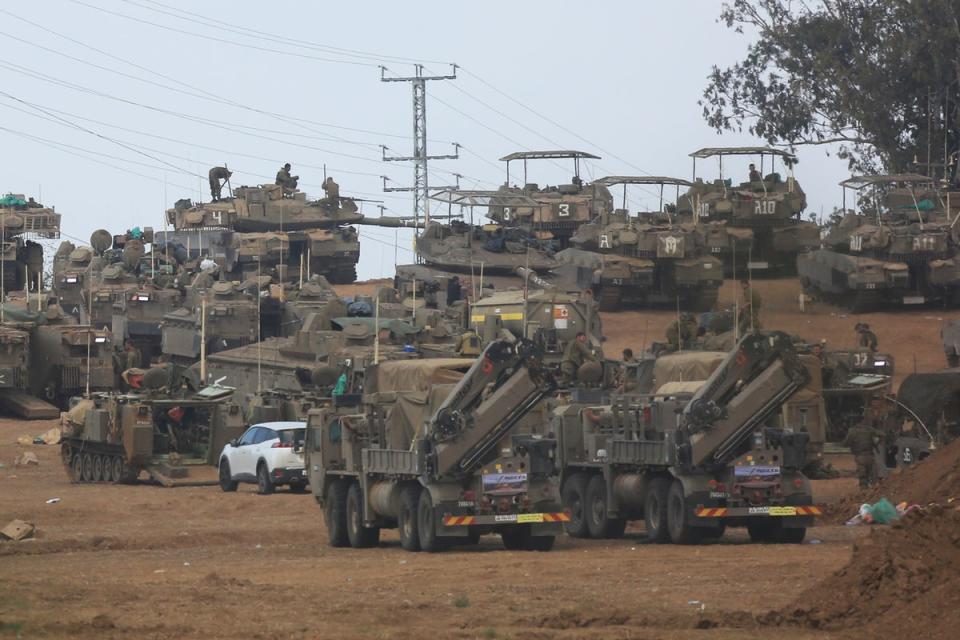
But, he added that he was “not entirely sure that Israel has enough of these capabilities for a ground invasion of Gaza”.
“We are talking about counter-UAS guns that can be carried by a single soldier and can be distributed across Israeli units from a platoon and squad, and above,” he said. “You need many of these guns and they need to be distributed organically to be effective.”
“Israel is one of the best countries in the world in terms of drone technology but, at the same time, you need these kinds of capabilities at scale to have an effect. I don’t think it has a sufficient scale to ensure the complete protection of its troops.”
This does not mean that Israel is bound to fail - they have their own offensive capabilities, aerial and otherwise, which have been discussed previously.
But it does mean that it is “certainly something Israel must carefully assess before launching an invasion,” Mr Borsari said. “They must be secure from this type of threat.”

 Yahoo News
Yahoo News 
